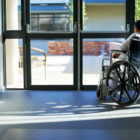Coping With Pandemic: Resurgence Of Guilt
|
Placing loved ones in a nursing home is often fraught with emotions, and a common one is guilt. Many are feeling a resurgence of guilt now, knowing that they are at higher risk during this pandemic. Coronavirus has swept through 150 of the state’s nursing homes and, as of April 29, 1,249 residents have died — representing about 55% of all COVID-19 deaths. As of last Thursday, there were 4,814 cases in nursing facilities. ConnHealthITeam · Coping With Pandemic: Guilt
Dr. Kirsten Wilkins, an associate professor of psychiatry at the Yale School of Medicine, talks with C-HIT’s Colleen Shaddox about strategies you can use to help your elderly relatives – and yourself – cope during the pandemic.








